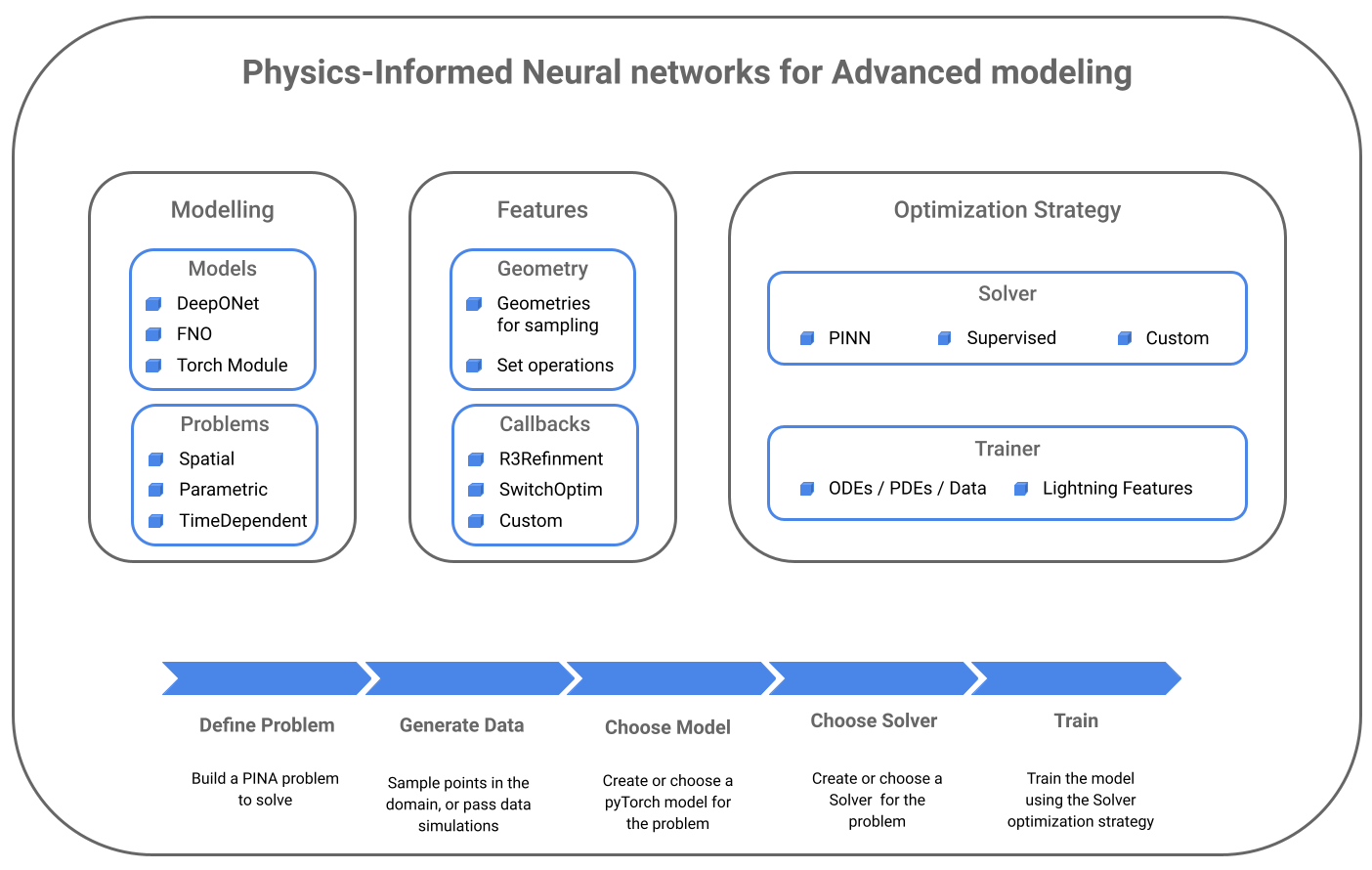Welcome to PINA’s documentation!¶
Physics Informed Neural network for Advanced modeling (PINA) is an open-source Python library providing an intuitive interface for solving differential equations using PINNs, NOs or both together. Based on PyTorch and PyTorchLightning, PINA offers a simple and intuitive way to formalize a specific (differential) problem and solve it using neural networks . The approximated solution of a differential equation can be implemented using PINA in a few lines of code thanks to the intuitive and user-friendly interface.
PyTorchLightning as backhand is done to offer professional AI researchers and machine learning engineers the possibility of using advancement training strategies provided by the library, such as multiple device training, modern model compression techniques, gradient accumulation, and so on. In addition, it provides the possibility to add arbitrary self-contained routines (callbacks) to the training for easy extensions without the need to touch the underlying code.
The high-level structure of the package is depicted in our API. The pipeline to solve differential equations with PINA follows just five steps: problem definition, model selection, data generation, solver selection, and training.
Physics-informed neural network¶
PINN is a novel approach that involves neural networks to solve differential equations in an unsupervised manner, while respecting any given law of physics described by general differential equations. Proposed in “Physics-informed neural networks: A deep learning framework for solving forward and inverse problems involving nonlinear partial differential equations”, such framework aims to solve problems in a continuous and nonlinear settings.
Neural operator learning¶
Neural Operators is a novel approach involving neural networks to learn differential operators using supervised learning strategies. By learning the differential operator, the neural network is able to generalize across different instances of the differential equations (e.g. different forcing terms), without the need of re-training.
Package Documentation:
Getting Started:
Community:
